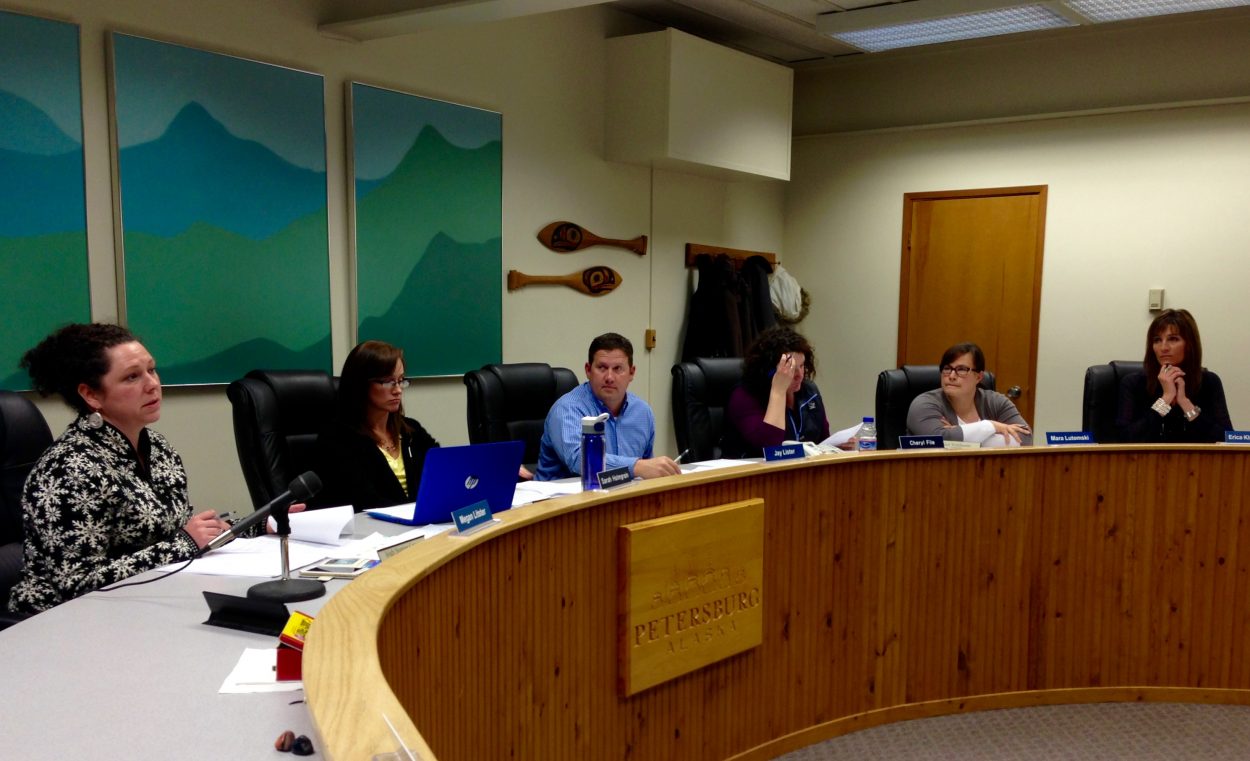
School board member, Megan Litster, speaks about the memorial policy at the last school board meeting. Photo/Angela Denning
Up until now there was no memorial policy in place, no protocol for how the school district should proceed if and when a tragedy struck a student or staff person.
Superintendent Erica Kludt-Painter said the idea behind the two-page policy is for the school to have something already in place in a time of crisis.
“As in small towns we’re often impacted by loss,” Kludt-Painter said. “So, I think just trying to move forward with that and trying to have some things in place that help administrators and help school officials and even help families just try to have a little more consistency.”
The board has been working on the memorial policy for a year and a half.
The policy states that memorabilia like flowers, balloons, photos and cards can be left up at the school for two weeks. Memorials extending beyond that time frame can be approved in the form of scholarships, donations, or a page in the yearbook.
The policy also states that the district will gather a crisis response team and provide support for students and their families.
The policy did not form without controversy. Throughout the process some community members thought a two week limit on memorabilia was not enough time.
“People felt like how could you put a time limit on grieving and the point to that is not to put a time limit on grieving because that clearly is not possible,” Kludt-Painter said. “But the idea being physical reminders of things whether it’s bears or balloons, posters things, cards and flowers, pictures. It doesn’t mean that we’re done, that we don’t ever talk about this person again but it means that the recommendations of mental health professionals and educators and even family members who have dealt with this say that you have to kind of put those things away at some point. It does not mean that you are done dealing with the loss.”
The policy states that existing memorials—of which there are three-would be returned to families. That didn’t go over well with some members of the public either. At the last board meeting, McKenzie Peeler spoke against taking them down. She is a family member of one of the students who died in recent years. She asked that the school leave the memorials in place until they can be moved to a community memorial site that she wanted the borough to establish. Or she suggested moving the memorials to a central location in the school.
“The reason we are fighting so hard for it to stay up is because it was dedicated to the community not just the family,” Peeler said.
At the same meeting, Michelle Brock spoke in favor of the policy, saying that at first, she didn’t think the school needed one but after doing some research she supported it.
“Most mental health professionals advocate the temporary, not the permanent memorials to be appropriate,” Brock said. “Also, placement of memorials is important so that it is a choice to view the memorials rather than a daily occurrence.”
Board members agreed that it took a while for the public to see the purpose of the policy but Chair of the Board, Sarah Holmgrain, said that she ended up receiving a lot of e-mails, letters, and phone calls supporting one.
“I was overwhelmingly contacted in support of the memorial policy and moving forward,” Holmgrain said. “So, it kind of solidified for at least me the direction that the district is going in.”
A letter from the former Superintendent, Rob Thomason, was read at the meeting which stated support for the school district pursuing a memorial policy to guide the district in the future.
The three existing memorials at the school will now be delivered to the families.












